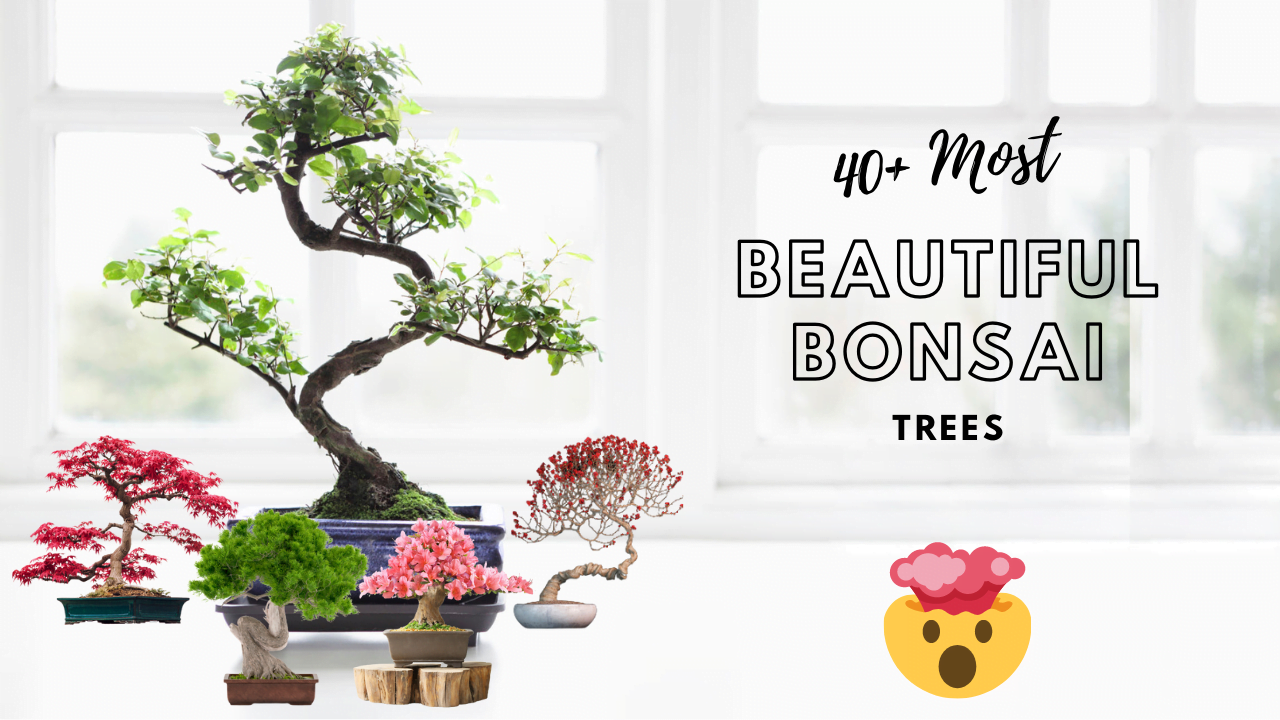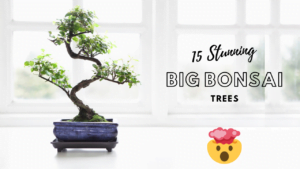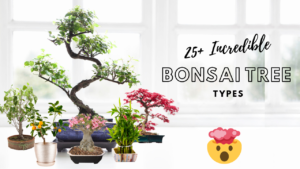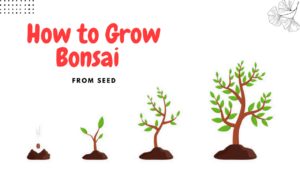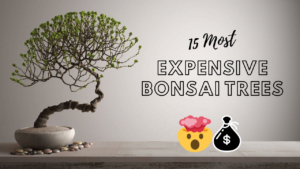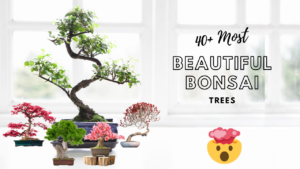Did you know that a 6.5 feet branch of Juniper Bonsai Tree in Kyoto Garden Ryokan Yachiyo took 30 years to mature? In this article, we’ll be looking at such bonsai trees that are so beautiful and mind-blowing, you’ll be left wondering if they really exist. Well, they do! So without further ado, let’s get started.
Beautiful Bonsai Trees
1. An 800 Years Old Juniper at Shunkaen Bonsai Museum
The Shunkaen Bonsai Museum is owned and operated by Kunio Kobayashi, and it houses a variety of rare and antique bonsai trees. This is a one-of-a-kind tree known for its incredible age; the tree is thought to be over 800 years old and worth at least $400,000.
The dramatic presentation of this bonsai tree sets it distinct from others. It has a distinctive twisted white bark that has clearly been refined over many years. The leaves have been placed in such a way that the plumes alternate in location. A simple shallow green pot was employed by the Bonsai Master. The basic pot does not cast a shadow over the lovely but old tree.
It simply draws attention to your tree’s bonsai design and gorgeous natural appearance. This bonsai tree is in excellent condition, and there is no question that it will thrive for many more years.
Online bonsai tools can be a great way to get everything you need for maintaining your bonsai tree. You can find a wide range of tools online, including pruning shears, wire cutters, root hooks, and more. Look for tools made with high-quality materials to ensure they last for years to come.
2. Blue Japanese Wisteria Bonsai Tree
The Blue Japanese Wisteria bonsai tree is one of the most exotic and stunningly attractive bonsai trees available today. Wisteria is recognised for its fragrant and attractive blossoms, which occur in a range of colors including pink, purple, blue, and white. This tree can reach a height of 30 feet in the wild. The Blue Japanese Wisteria bonsai is distinguished by its twining and woody stem and branches.
It has long leaves that are ideal for bonsai style, as well as tiny leaflets that provide a charming layered appearance. Despite its positive attributes and traits, the Wisteria deviates from conventional styling.
3. Goshin Bonsai, “Protector of the Spirits”, by John Naka
The Goshin, designed by John Y. Naka, is one of the most popular bonsai trees that is still alive today. The Goshin was made from the well-known eleven Foemina junipers and was first refined in 1948, according to legend. In 1984, this bonsai was given to the National Bonsai Foundation and shown at the United States Arboretum. Individual trees representing Naka’s grandchildren make up the Goshin bonsai.
The Goshin is perhaps the most well-known bonsai in the United States, and it was also one of the most well-known internationally. Over a lengthy period of time, the Goshin came together gradually. The first tree in the eleven-forest design is the tiniest and is located in the back. Mr. Naka’s various talks and demonstrations resulted in the larger, younger, more dominant trees.
The Goshin is a creation that began as a single tree and evolved into an 11-bonsai tree design. The first of the 11 trees was tall and only had a few leaf bunches. The first tree appeared to be a troubled tree with no leaf plumes on top. The roots were partially uprooted and the bark was tough.
Mr. Naka eventually began to make other trees after successfully cultivating a bonsai in 1963, so each time he was able to incorporate more. As a result, this lovely bonsai design was born.
4. Pinus Silvestris, by Stefano Frisoni
The Pinus Silvestris bonsai tree is known for its lifelike appearance. Stefano Frisoni is the mastermind behind this magnificent bonsai tree. It has dense, luscious deep green leaves pads that resemble a swarm of clouds in the sky. Scotts Pine is another name for Pinus silvestris. It is endemic to Europe, from the icy lands of Norway to the sunny shores of Spain, and has an evergreen conical to flat top. It may also be found in the cold zone to zone 2 in Asia, which is suitable for bonsai cultivation.
This bonsai tree is also popular since it can be cultivated and developed to suit many bonsai styles. It requires full sun to thrive, but it also requires protection from the midday sun, particularly during the summer months. Pinus silvestris prefers damp soil that isn’t overwatered. During the winter, you should use less water and wait for the soil to dry up before watering.
5. Penjing landscape by Yee-sun Wu
This beautiful Chinese scenery is part of the Hong Kong-based Man Lung collection. The trees are Chinese Bird Plums (Sageretia Theezans), and the scene is incredibly realistic. Ficus bonsai are also prominent in the collection. The trees, rock, and small figurines are arranged in this environment on a shallow rectangular marble pot, which is then put on an antique table.
Yee-sun Wu was a multi-talented artist who produced a wide range of works. Ornaments are used discreetly to enhance scale in this Sageretia theezans environment.
6. Flowering Azalea by Wolfgang Putz
This Azalea tree is just around 5″ (14cm) tall. The photo was taken in late spring/early summer, when Azalea trees are blooming (briefly, but vividly!). Azalea trees, known for their deep but brief flowers, are shown in their full glory. The tree right now resides within a Japanese-style container, adding to its overall aesthetic charm.
7. Rocky Mountain Juniper, Walter Pall
Walter Pall’s Rocky Mountain Juniper bonsai has received a lot of praise. The well-known bonsai gardener maintains his own blog, “Walter Pall Bonsai Adventures,” where he chronicles his juniper care. Pall was awarded the Crespi Cup Award in Italy for his Rocky Mountain Juniper. It was chosen due to its incredible shape and lifelike appearance. It was even dubbed one of the world’s most beautiful bonsai. Walter Pall’s Rocky Mountain Juniper has a windswept aspect.
The trunk appears to be dry, but there are a few plumes of lovely leaves at the top. Due its complex wiring and years upon years of continual redesign, the trunk twists numerous times to generate this design.
8. Japanese Maple by Walter Pall
The Acer Palmatum is another well-known bonsai developed by master Walter Pall. This is a meter-tall maple tree, unquestionably one of the world’s largest bonsai trees. Pall has refined and groomed the tree, which is thought to be around 100 years old, to reveal its hidden beauty. Apart from being a renowned bonsai, the Acer Palmatum has won numerous accolades for its extraordinary beauty, including the Art of Bonsai Photo Contest. Instead of following standard bonsai creation methods, Walter Pall created his own bonsai tree image and style.
Pall bought this maple in Switzerland, but it looked nothing like it does now. It had been ignored for a long time. The bonsai master has restored the tree’s health and greatly improved its branches and leaves since obtaining it. It is now one of Europe’s most popular bonsai trees.
9. Mame Bonsai display, by Morten Albek
A core tree, a scroll, and an accent plant are typical elements of a Bonsai display (or, in this case, a Mame display). These artifacts work together to produce a dramatic image, which is frequently a celebration of the present season.
10. Shohin tree by Morten Albek
The Rockspray Cotoneaster is a stunning plant. This photo was taken in the spring; the tree blooms in the summer and bears small red berries in the winter. The tree is only 4″ (10cm) tall and sits atop a tiny rock. John Pitt, a well-known potter, created the vessel. In the picture, the tree is roughly 20 years old and has been in training for nearly a decade. Shohin bonsai is so small in size, that it is considered as a tree in a pot that you can fit in the palm of your hand.
11. Brazilian Rain Tree by Budi Sulistyo
The Brazilian Raintree has grown from a little cutting to a large bonsai tree, making this one of the most popular tropical bonsai trees in the world. This plant is native to Central and South America, where the climate is extremely humid and ideal for its development. The rain tree grows to a towering height in the wild, yet as a bonsai tree, it appears to be a tiny miniature.
The Brazilian Rain Tree, also known as Samanea saman, is a massive tree that provides rain protection. Budi Sulistyo, a bonsai master, said his design has a beautifully balanced crown that shimmers with vitality. The bonsai features a sturdy trunk and a gorgeous, nicely sculpted leaf canopy. The Brazilian Rain Tree trunk resembles the trunks of old trees, making it both realistic and artistic.
Sulistiyo reportedly grew his Brazilian Rain Tree from a small pencil-sized clipping, according to several online accounts. The modest cutting took a huge amount of effort to develop, but the bonsai is now healthy, thriving, and gorgeous.
12. Bag End Landscape by Chris Guise
A big hill (The Hill) stretched to the north, and Bilbo’s father Bungo built the opulent smial Bag End above Bagshot Row on its southern slopes.
This is Bilbo Baggins’, Frodo Baggins’, and Samwise Gamgee’s home, and the setting for both The Hobbit and The Lord of the Rings. Chris Guise, a bonsai artist, spent more than 80 hours re-creating the scenario.
13. Juniper Bonsai tree by Luis Vila
A Juniper Bonsai tree is set in a distinctive Crescent Bowl, which adds to the cascade composition’s dramatic effect.
14. Art Installations of Azuma Makoto using Bonsai Trees
Azuma Makoto, a Tokyo artist, juxtaposes the natural world with the most strange and implausible of settings, from sealing exotic floral arrangements inside blocks of ice to sending bonsai trees into space, and the results are magnificent.
15. Pine Bonsai at Ryokan Yachiyo
The 6,5 foot (2 meters) branch of this Bonsai in Kyoto Garden Ryokan Yachiyo took 30 years to mature.
16. The Smallest Bonsai in the World
This work of art is 22mm in diameter and was created from a Malaysian native species known as “water jasmine” — the only species that can reportedly be made so small. Since the normal size of a miniature bonsai is 10cm, creator Kuah Tee Teong thinks it may be the world’s smallest bonsai. Kuah isn’t looking for fame; he hasn’t entered his creation into the Guinness Book of World Records, and he has no plans to market his little trees.
17. The Biggest Bonsai Tree in the World
According to the workers of Akao Herb & Rose Garden in Atami, Japan, this 600-year-old Japanese bonsai tree is reportedly the world’s largest bonsai tree. Sure, the title is a bit odd, given that the major characteristic of bonsai trees is their diminutive size. After all, if bonsai means “tree in a pot,” size doesn’t matter, especially when the container includes an astonishing 5 meter tall and 10 meter broad ancient red pine bonsai like this one.
Despite its enormous size, the Red Pine is regarded as a bonsai tree because it has been grown in a large pot or tray. Thus, it fulfills the credentials to be a bonsai tree. Also, the Red Pine is estimated to be approximately 600 years old. Some claim that the Red Pine is one of the oldest bonsai trees in the world, entitling it to bear two titles, as opposed to one.
18. Walter Pall’s Crab Apple Tree
Pall’s collection includes a wonderfully sweet 65 cm high apple tree, which is my particular favorite. I’m not sure how anyone who sees it can avoid trying one of those small apples, but I believe Mr. Pall keeps it hidden away from prying eyes. Fruit tree training is becoming increasingly popular among bonsai enthusiasts. The most remarkable aspect is that the fruits, particularly those belonging to the citrus family, are edible.
Cherries, apples, lime, lemons, tangerines, and figs are all common fruits that can be purchased in small quantities. The success of a bonsai fruit tree is heavily influenced by meteorological and topographical elements such as humidity, temperature, and soil.
19. Award-Winning Chinese Juniper
The Chinese Juniper is a well-liked and well-known bonsai tree among both professionals and beginners. Wood can be styled into attractive and unique shapes due to its malleability. Like this one from Italy’s Enrico Savini, which has won a number of prizes, including the Ben Oki International Design Award in 2003 and the Bonsai Clubs International People’s Choice Award in 2008.
Savini claims he initially became interested in bonsai art when he was ten years old, and his first tree, a Prunus mume that only lasted a few months, was a present from his grandmother.
20. Juniper by Peter Ebensperger
A spectacular and one-of-a-kind display. Forest style slanting Juniper Bonsai composition.
21. Deshojo Maple Tree
The Omiya Bonsai Museum has a multi-trunked Deshojo Japanese maple with lovely fall colors on exhibit.
22. Shohin Crab Apple
Crabapple berries on a Bonsai tree, extremely small in size (called Shohin). Katsumi Komiya is the creator of this piece. The Malus genus consists of around 50 species and a considerable number of cultivars. For bonsai, crabapple species are favored, with lovely tiny fruit in various shades and formations. Oftentimes the crabapple is just referred to as ‘Apple’. In spring they create gorgeous white or pinkish buds with five petals and in autumn the lovely fruit decorates the bonsai.
23. Kimura’s Bonsai Forest
Mr. Masahiko Kimura of Japan created one of the most outstanding forest Bonsai.
24. Juniper Bonsai on rock, Omiya
Photo taken at the Omiya Bonsai Museum in Saitama, Japan, depicting a magnificent composition of two Bonsai trees placed on a rock.
25. Meifu-Ten Bonsai on Rock
Peter Tea photographed a bonsai stuck to a rock at the Meifu-ten in Japan.
26. Buxifolio Bonsai Forest
Luisa Alfaro created a Buxifolio Bonsai grove on a rock.
27. Rock Bonsai by Mr. Kimura
Mr. Kimura fashioned a forest of Hinoki cypress on a slanting rock for Marcus Watts.
28. Juniper Bonsai by Jose Luis Blasco Paz
Juniperus Bonsai in the Literati style, really stunning!
29. Juniper at the Kokufuten 2013
At the 2013 Kokufuten in Japan, there was a magnificent Juniper Bonsai tree on display.
30. Magnolia Stellata
Magnolia Stellata, a very ancient specimen.
31. Cherry Blossom Bonsai at Omiya Bonsai Art Museum
The Omiya Bonsai Art Museum in Japan has a Cherry Blossom Bonsai on display. Kanzakura, which means winter cherry in Japanese, is the Japanese name for the Chinese primrose. Because the tree blooms earlier than cherry trees when the weather is still chilly, it is given this name. The age of this tree is estimated to be around 85 years.
32. Massive Ficus
In Taiwan, a gigantic Ficus is part of a vast Bonsai collection.
33. Ficus with a Twin Trunk
Ficus by Rob Kempinski in the double trunk style.
34. Rikushu-no-Matsu Ship Pine
The Rikushu-no-Matsu Ship Pine, one of Kyoto’s most famous botanical sights, can be found in the Kinkakuji temple’s gardens. The branches and trunk of this 650-year-old historic tree were cultivated to resemble a ship design, with the branches and trunk representing the mast and bow.
It’s not the easiest tree to grow, but if you stick with it, you’ll be rewarded with a beautiful, dense tree that will fit in with any interior design plan.
35. Ficus Retusa Linn
The Ficus retusa Linn, which can be seen at the Crespi Bonsai Museum in Italy, is thought to be the world’s oldest bonsai tree, with an estimated age of 1,000 years. Luigi Crespi, the founder of the Crespi Bonsai Museum, tried for ten years to get ownership of the bonsai tree before ultimately succeeding in 1986.
The spectacular trunk of Ficus Retusa Linn consisting of a thick network of aerial roots develops in a unique pot created and fired in a single block, It’s the world’s biggest bonsai pot. Handling and taking care of this old and unique bonsai every day requires plenty of skill and a keen mind of what the tree wants in terms of water and temperature throughout the year. The tree’s shape looks outstanding because it has slowly adjusted to its surroundings. The tree’s strong personality will move the visitors, when you go into the glass building where it resides at the Crespi Bonsai Museum, it’s amazing.
36. Yamaki Pine
The Yamaki Pine has become one of the most well-known bonsai trees in the world since its true history was unearthed in 2001. Masaru Yamaki sent the bonsai tree to the United States as part of a 53-specimen gift for the country’s bicentennial in 1976, and it is a survivor of the atomic bomb that was dropped on Hiroshima, Japan, during World War II. The National Arboretum was ignorant of the tree’s history until two of Yamaki’s grandsons came to check on it in 2001.
Yamaki’s grandchildren provided the museum with information about the tree, including news video shot at the Yamaki Nursery following the explosion, which showed the tree standing tall in the background.
37. The Million Dollar Bonsai
At your local big-box garden center, bonsai can cost anywhere from $20 to hundreds, if not thousands, of dollars. Their monetary value skyrockets as they get older and outlive the people who have cared for them for a lifetime. Many of the oldest or rarest species (such as the Crespi ficus or the Hiroshima pine) are practically priceless and will never be sold again. However, every now and again, a valuable species becomes available for purchase, and the audience goes insane.
When these unusual plants are sold, they aren’t cheap; the most expensive bonsai to date was a 1.3 million dollar sale of an 800-year-old bonsai pine!
38. Giant Bonsai at Imperial Palace, Tokyo
A gigantic bonsai in the Imperial Palace in Tokyo has to be strengthened to prevent it from bowing due to its weight. This tree, in its little size, may add a touch of elegance to any home with its luxuriant foliage, which is a darker shade of green and suggests a long history.
39. Sandai Shogun no Matsu
The Sandai Shogun no Matsu, which signifies “third generation Tokugawa’s pine“, is a bonsai that has been handed down through the line of Japanese rulers for 500 years. One of Japan’s National Treasures is the Sandai Shogun no Matsu, a five-needle pine. The bonsai is about 500 years old and was named after Shogun Tokugawa Iemitsu. Iemitsu purchased the tree when it was about 200 years old, and it has been passed down from emperor to emperor since then.
After almost 500 years, Japan’s monarchs have cared for the Sandai Shogun no Matsu bonsai tree, which is now on exhibit at the Tokyo Imperial Palace collection. During World War II, the national bonsai exhibition was overlooked. It is considered that it will take more years to repair the damage made by negligence.
Today, the Sandai- Shogun-No Masa remains one of the most exquisite and oldest bonsai species on the planet. It gets royal treatment when it is moistened, fertilized, and shaped by Imperial House attendants. And because of great maintenance, there is no doubt that this bonsai will survive for more than 500 years.
40. Sakura Bonsai Tree
And as the last bonsai tree, we have saved up the most gorgeous of all bonsai trees! Look at this time lapse of it blooming!
And a closeup of the flowers! So beautiful.
Conclusion
Here ends the list of the most beautiful and fascinating bonsai trees in the world! Bonsai plants are truly one of the most amazing creations of both nature and mankind.

